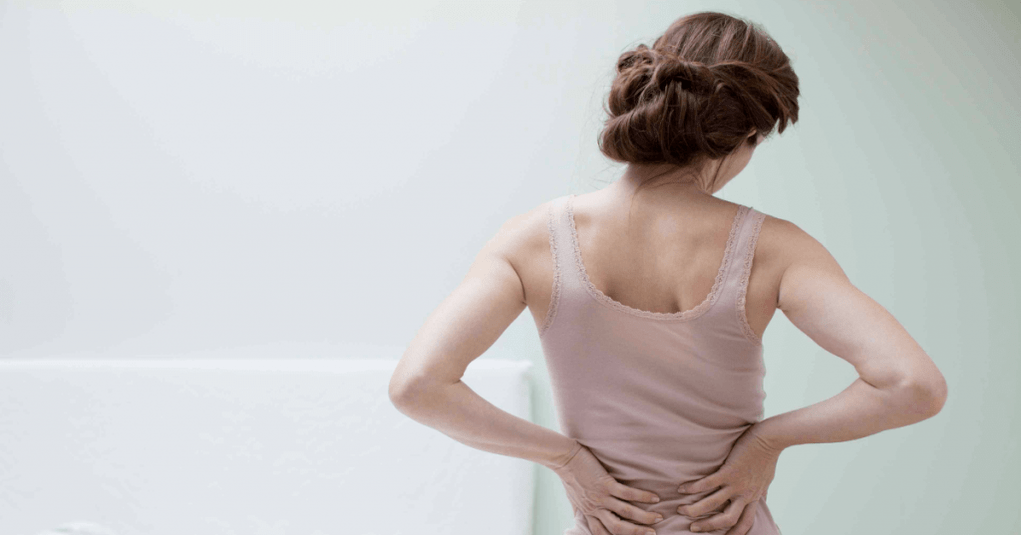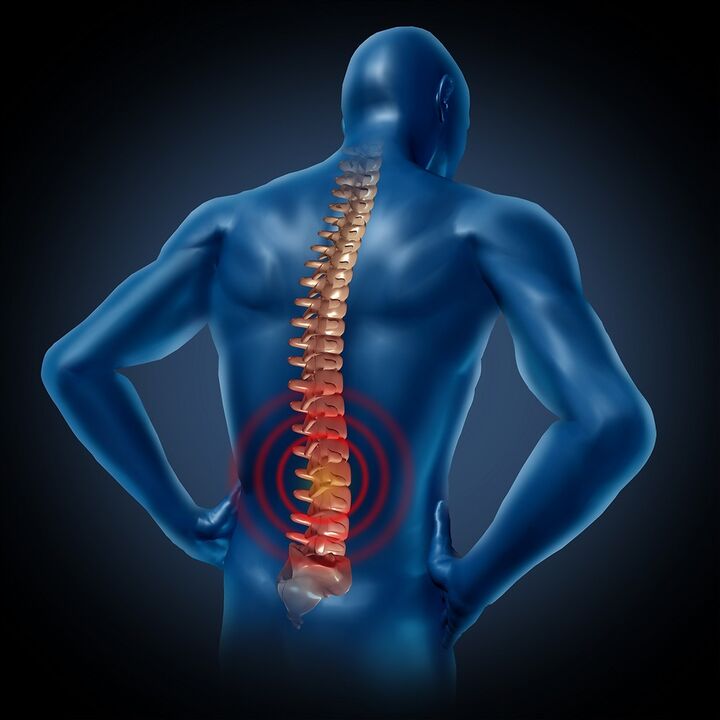Back pain is slightly less than headache. Every adult has experienced this feeling at least once. Most often, the neck and lower back are affected. Doctors attribute this to a gradual reduction in people’s physical activity as many people work and relax at the computer. It is the cause of chronic degenerative diseases of the musculoskeletal system, which is the most common cause of back pain. Timely examination and treatment, regular physical activity and normalization of body weight will help you to remove discomfort and take joy in movement.

General Information
The high frequency of back pain is associated with its anatomy. The basis is the spinal column. Cartilaginous discs are located between the backs of the spine, which perform the function of shock absorption. Additional skeleton is provided by muscles and yokes. The spinal cord runs inside the spinal column, from where the paired roots extend, irritating almost all organs and tissues.
A pathological process in any structure of the spinal cord, as well as related internal organs with nerve fibers, can cause pain. Often a doctor needs to make a thorough diagnosis to find out its source.
ᲛReasons
Most of the conditions that cause pain in some parts of the spine are chronic in nature. They start gradually and go on asymptomatic for a long time.
Among the external and internal causes that can cause aggravation are the most common:
- Increased strain on the background of frequent weight lifting or excess weight on the spine;
- Metabolic disorders;
- Disorders of the musculoskeletal system and diseases of the musculoskeletal system (for example, osteoarthritis of the hip joint or flat feet), which leads to uneven distribution of load;
- Hypothermia;
- Infectious and autoimmune inflammatory processes;
- Volumetric formations (tumors, abscesses);
- Pathology of the internal organs of the chest or abdomen.
ავადDiseases
Back pain can be a symptom of many diseases that can be divided into several groups.
Pathology of the spine or joints
This is the most common cause of back pain. Most diseases are associated with high and / or uneven load on the spinal column:
- Osteochondrosis: The cartilaginous discs between the vertebrae begin to disintegrate, thinning and being replaced by bone tissue; As a result, the spinal amortization function suffers and often the spinal cord or its root is compressed;
- Intervertebral hernia: The central part of the intervertebral disc protrudes towards the spinal cord, weakening it; The problem often arises against the background of advanced osteochondrosis;
- Ankylosing spondylitis: Autoimmune inflammation of the joints of the spine and joints, causing painful spasms of the surrounding muscles; Over time, this becomes the reason for cutting the spine together;
- Spondylolisthesis: Dislocation of the spine from a normal position, which can cause compression of the roots or spinal cord;
- Rheumatoid arthritis: inflammation of the joints of an autoimmune nature; More often affects the cervical spine;
- Osteomyelitis: Inflammation of bone tissue.
Muscle tissue pathology
Muscle tissue is often involved in the pathological process of bone tissue or joint pathology. In this case, painful spasms appear in the affected area. In addition, pain may occur:
- Fibromyalgia: Chronic pain in muscles and ligaments accompanied by stiffness and stiffness;
- Myositis: An inflammatory process in the muscles that occurs in the setting of hypothermia, stretching, injury, or physical exertion;
- Dermatomyositis: A chronic lesion of the skin, muscles, and internal organs, most likely of an autoimmune nature.
Spinal and root pathology
Most often, pain occurs due to compression of certain areas of nerve tissue due to trauma, tumor, osteochondrosis, or disc herniation. Isolated damage can cause:
- Infection associated with infection, including HIV and syphilis;
- Multiple sclerosis;
- Bleeding;
- Lack of oxygen;
- Deficiency of vitamins or minerals.
Pathology of internal organs
Most of the internal organs are innervated by the roots of the spinal cord. As a result, any pathological process in them can cause back pain. Most often doctors have the following problems:
- Renal pathology: pyelonephritis, urolithiasis;
- Inflammation of the pelvic organs: salpingitis, salpingo-oophoritis, prostatitis;
- Gallbladder pathology: cholecystitis, cholelithiasis;
- Damage to the cardiovascular system: angina pectoris, heart attack, aortic aneurysm, pulmonary embolism;
- Respiratory diseases: pleurisy, pneumonia, abscess, pneumothorax;
- Appendicitis.
The nature and localization of pain
The localization and nature of the sensations can say a lot about their source. It is important to tell your doctor in as much detail as possible about back pain so that he or she can determine the cause and treat it as quickly as possible.
Depending on its nature, pain can be:
- Acute: often occurs on the background of osteochondrosis, intervertebral hernia, lumbar or sciatica, which usually intensifies movement;
- Pain: characteristic of chronic inflammatory processes in muscles, joints or internal organs;
- Pressure or swelling: most often refers to acute or chronic pathology of internal organs;
- Pulsatile, strong: usually associated with trauma, lumbago, spondylosis, exacerbation of osteochondrosis.
Localizing pain syndrome can also help you diagnose:
- Right: pathology of the liver, gallbladder, duodenum, damage to the ovary or kidney on the right, appendicitis;
- Left: pathology of the spleen, left kidney or ovaries, myocardial infarction, pancreatitis;
- In the lumbar region: sciatica, osteochondrosis, lumbar pain, Reiter's syndrome, interstitial hernia;
- Below the waist: osteochondrosis or interstitial hernia, bilateral inflammation of the ovaries, pathology of the uterus, convulsions during menstruation;
- Under the right scapula: pathology of the liver, gallbladder, pancreas, right intercostal neuralgia, pleurisy, pneumonia;
- Left shoulder: heart disease, left side pneumonia, pleurisy, intercostal neuralgia, etc. Sh.
See a doctor immediately when needed
Back pain can be both a sign of a relatively harmless pathology as well as evidence of a dangerous process that requires immediate medical attention. The person should immediately consult a specialist in the following situations:
- The pain occurred after the injury;
- It is impossible to find a position in which the pain subsides;
- There is an increase in temperature;
- Signs of nerve damage appear: numbness, tingling, muscle weakness;
- Pain worse at night;
- Sensations are accompanied by weakness, darkness in the eyes, palpitations, cold sweat;
- Painkillers do not give relief;
- Treatment progresses despite treatment;
- Blood pressure changed dramatically (increased or decreased);
- Do you have urinary problems or have your urine changed color?
- The pain spread to the chest, abdomen;
- The condition is accompanied by nausea, vomiting, profuse loose or delayed stools.
In general, any suspicious symptoms that were not noted in previous attacks of pain should alert the patient and become the cause of emergency medical care.
Diagnosis
Back pain tests include:
- Collecting complaints and medical history, specifying the circumstances of pain, its nature, intensity, localization and other important parameters, identifying risk factors for various diseases;
- General examination with measurement of blood pressure, assessment of heart rate, respiration, temperature;
- Neurological examination: assessment of sensory and motor functions, degree of reflexes;
- Laboratory diagnostics: general blood and urine tests, basic biochemical blood test; If necessary, tests are prescribed to confirm or rule out a specific pathology;
- Electrocardiography, cardiac ultrasound;
- X-ray of the spine, CT or MRI;
- Ultrasound of abdominal organs, small pelvis;
- Chest x-ray;
- Doppler ultrasonography of the neck and brain vessels;
- Electromyography: assessment of the degree of conduction of nerve impulses by means of muscle fibers;
- Consultations of narrow specialists: nephrologist, cardiologist, gynecologist, etc. Sh.
The list of tests, diagnostic procedures, and consultations may vary depending on the patient's complaints.

Treatment of back pain
The choice of treatment methods depends on the cause. Most often, doctors face pathology of the musculoskeletal system and nervous tissue. In this case, the basis of pain relief therapy becomes:
- Nonsteroidal anti-inflammatory drugs;
- Hormonal agents;
- Muscle relaxants: to relieve muscle spasms;
- B group vitamins: to improve the condition of nerve tissue;
- Narcotic analgesics: With the ineffectiveness of other groups of medications.
Additional procedures help to supplement the effect of the medication:
- Physiotherapy: electro and phonophoresis, laser and magnetic therapy, electroneurostimulation;
- Massage;
- Manual therapy;
- Physiotherapy.
Specific techniques are chosen by the doctor, depending on the cause of the organism and individual characteristics. In some cases, surgical treatment is prescribed.
Prevention
Back pain can be avoided. To do this, you must follow the following rules:
- Prevention of hypodynamics: doing gymnastics, playing sports (without overload);
- Avoid stress;
- Rest well;
- Eat right, avoid excess weight gain;
- Avoid heavy lifting;
- Correct posture disorders;
- Have regular check-ups by a doctor to treat chronic diseases in a timely manner.
Back pain can be subtle, or it can completely affect a person’s immobility. To avoid a crisis, visit a doctor at the first sign of trouble.

















































